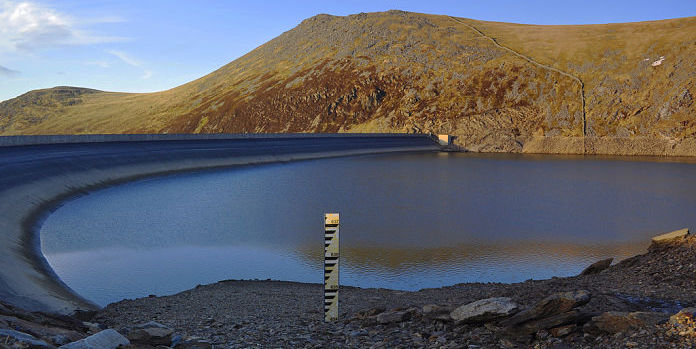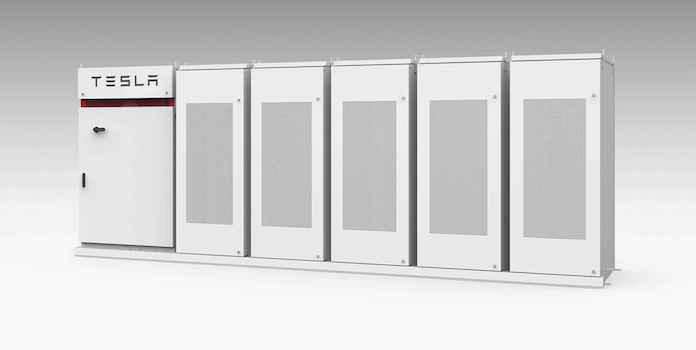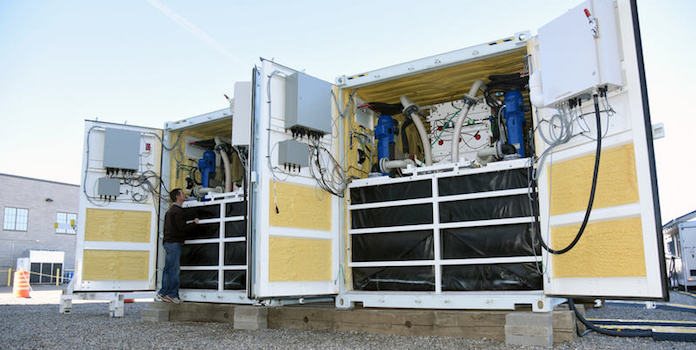Storing Solar Energy in Water with Pumped Hydro Storage

Does it make sense to use pumped hydro storage for solar energy?
If you’re like the majority of people, the idea of storing solar energy in water sounds confusing and virtually impossible. Who has ever heard of pumped hydro storage for solar before? Yet “energy storage” is the renewable industry’s latest buzz phrase, and it is changing at a rate faster than anyone but those designing it can keep up with.
“But why should I care about storage?” you ask. Great question! At the end of the day, it’s about how much money you want to keep in your wallet. Our ability to store energy more effectively will directly impact the price you pay for your electricity.
Renewables – The Plot (to Store Energy) Thickens
Within the last decade, renewable energy generation – particularly solar power and wind – has become so widespread that it’s affordable and even cost competitive with conventional fuels like oil, coal, and gas. However, renewables are not a perfect substitute for fossil fuels, at least from a logistical standpoint.
Although solar technology is rapidly improving our ability to make use of the energy we’re collecting from the sun, one of the biggest issues we continue to face is how to keep using solar energy when the sun is no longer shining.
Most of us live in areas of the world that require us to light our homes before and after our workday. Even if you’re lucky enough to live somewhere with 18 hours of sunlight, you’ll probably still need energy to run your dishwasher or your refrigerator after the sun goes down.
As the majority of Americans operate around a common “9 to 5” schedule, the highest demand for energy comes after we return home and turn on a myriad of electrical appliances. The Energy Information Administration published a study a few years ago that put 6:30 pm as the time of peak energy demand in the New England area.
However, on average, the sun’s rays are strongest in the afternoon. So, in short, there is a mismatch of schedules between the average American and the energy that the sun emits towards us earthlings. We’re making energy that we aren’t around to use. This is where storage comes in. We need to create methods to hold this solar energy so that we can tap into it even after the sun stops shining.
Batteries: Not a One-Size-Fits-All Solution
Batteries are a great way to store renewable energy like solar. When they were first introduced for residential solar, they were completely unaffordable and difficult to mass produce. But as the interest in renewables grows, so do the number of storage batteries on the market.
Why do we use batteries? In many ways, they solve the problem I described above. At roughly 6:30 pm on the East Coast of the US, millions of people are sitting down to eat dinner. As we each flip on our kitchen light, demand for energy increases.
Most of us turn on lights or run appliances like the TV at some point in the morning or after we get home for the day. The only affordable, widely produced renewable energy storage batteries on the market today are unable to disperse large amounts of energy over an extended period of 4-6 hours, which is exactly what we need in order to replace our fossil fuel energy consumption with that of renewables.
Pumped Hydro Storage for Solar: Is It a Game Changer?
There are more ways to store solar power other than the use of batteries, one of which may be able to get us over those high-demand evening hours. Pumped hydro storage is a well-tested, mature technology capable of releasing large, sustained amounts of energy through water pumping.
The process requires two reservoirs of water, one at a low elevation, and the other at a higher elevation. Once connected, low cost electricity (like solar) is used to pump the water from below to above. When energy is needed, the stored water above is released through turbines, producing electric power. When the demand for energy goes down, the higher reservoir is slowly refilled for the next round of energy dispatch.
The best aspect of pumped hydro as an energy storage method is that it is relatively inexpensive and long-lasting. It has very high round-trip efficiency, which means little power is wasted while it generates electricity. Most are designed to store between 6-20 hours of energy, with the amount of energy dependent on the system’s size.
California has already gone far with hydro plants. They are able to provide 4,243 MW of dependable energy through places like the Courtright Reservoir (owned by PG&E), which you can see at the top of this page.
As the California Senate continues to push forward a bill that would require 100% clean energy throughout the entire state, bulk energy like hydro storage will be irreplaceable in achieving that goal. However, it’s not an easy solution, as it demands the right geographic logistics (i.e., a place to store lots and water and a means to pump it up a hill).
Despite this, it could still be implemented in the majority of places within the National Electricity Market, making it a valid wide-scale solution.
Pumped Hydro Versus Batteries: Which Is Better?
While there are also other options for renewable energy storage such as flywheels, compressed air, cryogenic energy storage, flow batteries, and hydrogen, let’s focus on the comparison of large-scale lithium-ion battery storage (used to power an entire city, not single home usage) versus pumped hydro storage.
This is a hot topic in the storage market these days, as these two seem to be duking it out as top-pick storage providers for both public and private enterprises. A lot has been in the news lately about the new massive battery storage plants built in Southern California. What’s special about them?
Well, unlike the Tesla Powerwall, which is a battery storage option for single home usage, Altagas LTD, Tesla, and AES Corp have created three of the largest battery storage facilities in the world. The power of these large-scale battery storage facilities combined is equal to 15% of all battery storage installed across the world in 2016.
This is big news, as batteries had previously only appeared in a small number of grid-scale projects. These storage facilities have proven that battery storage on a large scale can feasibly enter the ring with the other heavyweight energy storage facilities. But it’s not certain whether they can throw a decent size punch at competitors yet.
Comparing Costs
In many ways, comparing large scale hydro water storage to large-scale lithium-ion batteries is like comparing an apple to a cucumber, rather than apple to an orange. They are both found in the produce section, but can hardly be categorized as being in the same food group. They both store energy and put it back onto the grid, but their strengths are very different.
Let’s take a look at one of the most important components of building and running these facilities: cost. Even ten years ago, there would have been no competition between these two due to the historically high price of batteries. However, large-scale production of batteries has driven the price down to less than half of what it was in 2013, making them a much more viable option for large-scale operations.
At a large-scale solar conference in April of 2017, the head of Arena Energy said that large-scale battery facilities have come down so much in price that the cost of 100MW of energy capacity with 100MWh (one hour of storage) would be about equal between large-scale battery storage and water hydro storage. However, if that number increases even slightly, to 100MW with 200MWh of energy storage, hydro immediately beats out battery storage.
When you take that number to 500MWh, it’s game over for batteries. As I mentioned earlier, pumped hydro storage’s greatest strength is its economies of scale. Once all the equipment for pumped hydro is in place, it’s fairly cheap to get more electricity out of it (you just need more water). With batteries though, the more electricity you want to store, the more batteries you need, so prices increase substantially as the system gets bigger.
Think of pumped hydro as a large wholesale store, always able to offer much lower prices than the boutique local shops. They buy en masse and sell en masse, making their prices very difficult to beat. In this way, pumped hydro storage really wins as the choice provider of power in times of peak demand.
The Future of Pumped Hydro
As the renewable energy market continues to grow and mature, economical and effective storage methods like pumped hydro storage will make solar not just a cleaner substitute for fossil fuels, but a more reliable one. Pumped hydro storage currently stores only 2% of total US power generation, but there are plans in the works to double that capacity.
As the cost of batteries continues to decline, the future is bright for renewable energy consumers and generators. For those who are thinking about investing in solar panels, an overall better storage method like this one will stabilize the market and make the investment an even safer one.
If you’d like to learn more about this topic, here are a couple of links that might interest you:
- Video: “Energy Storage for the Age of Renewables” – Prof. Dr. Eduard R. Heindl at TEDxStuttgart
- “Energy Storage” – Environmental Protection Agency.
- “The New Economics of Energy Storage” – Mckinsey.
Please leave us your comments on solving the issue of solar storage below!
Image Credits under CC License via Flickr – 1, 3, 4, 6 & Pixabay – 2 & Courtesy of Tesla – 5





